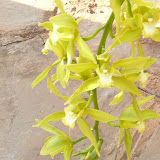
An Avocado Tree in your garden will provide you with fruit year after year.
The tree can be started from a seed which is sprouted or a seedling can be bought from a nursery.
The trees prefer phosphates and potash - but a good organic compost will do just as well.
Cropping ususally occures in the third or fourth year after planting. but can take up to seven years!
Avocados like well drained loamy soils and do not do so well in clay or heavy soils.
Root rot can start even after ten years if the soil conditions are not liked by your tree. This is shown by the dying back of branches.
When plating make sure your hole is at least 120 cm square by 120 cm deep. Fill with goodd garden soil and compost. Water every three or four days until established and then water weekly.
Cover in mid may against possible frost in September or october the tree will start to grow very rapidly.












